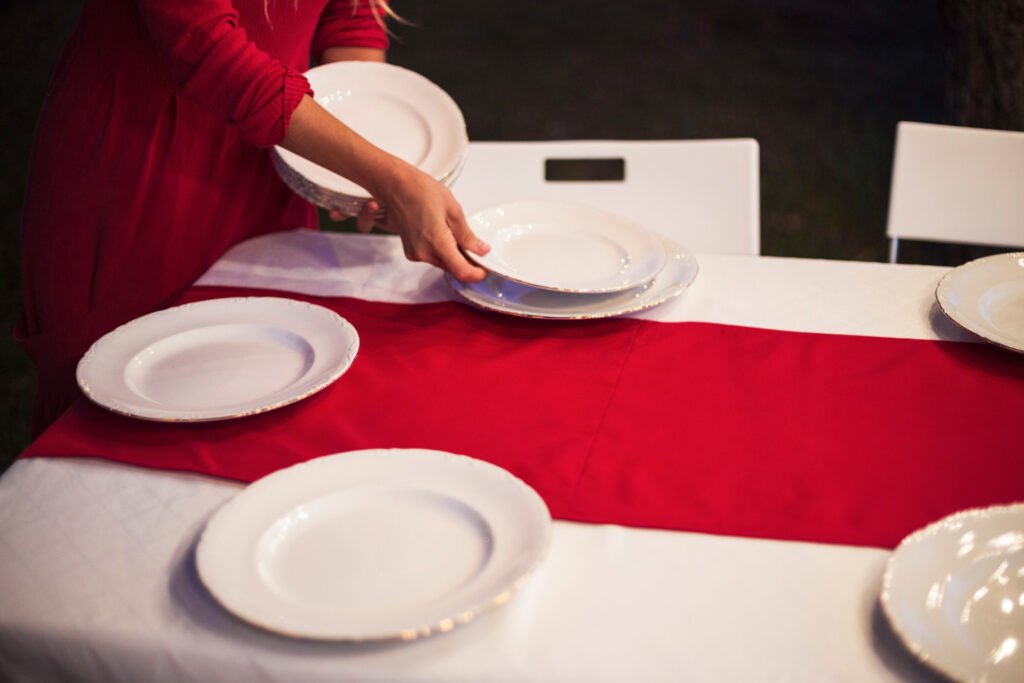
Introduction
Properly organizing and storing food service linens is essential for maintaining a clean, efficient, and well-run establishment. From restaurants to catering services, the way linens are handled can affect hygiene, operational flow, and even the overall ambiance of a dining space. In the USA, where food safety standards are particularly stringent, ensuring that food service linens are stored in a manner that promotes cleanliness and longevity is crucial.
Understanding Different Types of Food Service Linens
Food service linens in USA come in a variety of forms, each serving a unique purpose. These include:
- Tablecloths: Essential for setting the table and enhancing the dining experience.
- Napkins: A staple at every dining table for personal hygiene.
- Towels: Used for kitchen duties, drying hands, and cleaning surfaces.
The materials used for these linens range from cotton and polyester blends to more luxurious options like linen. Each material has its own durability, and understanding their differences helps in organizing them effectively.
Benefits of Proper Linen Storage
When linens are properly stored, you can expect several benefits:
- Increased Longevity: Storing linens in appropriate conditions helps preserve their quality, ensuring they can be reused for longer.
- Improved Hygiene: Proper storage keeps linens clean, preventing contamination and maintaining hygiene standards.
- Efficient Use of Space: Well-organized storage maximizes available space, reducing clutter and making linens easier to access.

Essential Steps for Linen Organization
Organizing food service linens can seem like a daunting task, but following a few key steps makes it manageable:
- Sorting: Separate linens by type (tablecloths, napkins, towels), size, and purpose.
- Color Coding: Assign different colors for different linen types to simplify identification.
Best Practices for Storing Food Service Linens
To ensure the longevity and cleanliness of linens, proper storage practices must be followed:
- Storage Conditions: Linens should be stored in cool, dry areas to prevent mold and mildew growth.
- Avoid Overcrowding: Linens should be neatly folded and stored without overcrowding, as this can lead to wrinkles and damage.
Creating an Efficient Linen Rotation System
An efficient linen rotation system is key to reducing wear and tear. The First-In, First-Out (FIFO) principle ensures that older linens are used before newer ones, preventing overuse of certain sets. This practice distributes wear evenly across all linens, extending their lifespan.
Special Storage Solutions for High-Volume Restaurants
For high-volume restaurants, storage solutions must accommodate larger quantities of linens:
- Space-Saving Techniques: Utilize vertical shelving or custom racks to maximize storage space.
- Rolling Carts: Mobile linen carts can be used to transport and store linens efficiently.
Maintaining Cleanliness and Hygiene of Linens
Cleanliness is paramount in the food service industry. Linens should be washed and sanitized regularly to maintain hygiene standards:
- Sanitizing: Use high-temperature washing and sanitizing detergents to eliminate bacteria.
- Cross-Contamination Prevention: Store clean linens in separate areas from dirty linens to avoid cross-contamination.

How to Handle Stained or Damaged Linens
Over time, linens can become stained or damaged. Addressing these issues promptly is essential:
- Stain Removal: Treat stains as soon as possible using appropriate cleaning agents.
- Repair or Replace: For minor damage, repairs can extend the life of a linen, but severely damaged linens should be replaced.
Storing Seasonal Linens
Seasonal linens, such as those used for holidays or special events, require special care:
- Off-Season Storage: Store linens in protective covers during the off-season to prevent dust and damage.
- Rotation: Ensure that seasonal linens are rotated and inspected regularly.
Eco-Friendly Linen Storage Options
Sustainability is becoming increasingly important in the food service industry:
- Sustainable Storage Solutions: Use eco-friendly storage bins and racks made from recyclable materials.
- Reducing Waste: Organize linens to avoid over-ordering and reduce waste.
Linen Inventory Management
Maintaining an accurate inventory of your linens is critical to ensuring you have enough for service without overstocking:
- Digital Inventory Systems: Implement a digital system to track linen use and identify when reordering is necessary.
- Regular Audits: Conduct periodic linen audits to assess condition and quantity.
Importance of Linen Vendor Selection
Selecting the right linen vendor is essential for ensuring quality and cost-effectiveness:
- High-Quality Linens: Partner with vendors that offer durable, high-quality linens that can withstand the rigors of the food service industry.
- Reliable Suppliers in the USA: Choose local suppliers to ensure quick delivery and reduce shipping costs.
Cost Savings Through Efficient Linen Organization
By organizing linens efficiently, businesses can realize significant cost savings:
- Maximizing Lifespan: Proper storage and care reduce the frequency of linen replacement, saving money in the long run.
- Operational Efficiency: Streamlined linen organization saves time and effort, allowing staff to focus on other tasks.

Conclusion
In conclusion, organizing and storing food service linens effectively is crucial for maintaining hygiene, efficiency, and cost savings. By implementing the best practices outlined above, food service businesses can ensure their linens are always in top condition, contributing to a smooth, professional operation.
FAQs
- Why is linen organization important in the food service industry?
Proper linen organization ensures cleanliness, efficiency, and cost savings, all of which are essential in food service operations. - How should I store my food service linens to ensure longevity?
Store linens in cool, dry conditions, neatly folded, and avoid overcrowding to prevent wrinkles and damage. - What is the best way to manage linen inventory?
Implementing a digital system to track usage and conducting regular audits can help manage inventory effectively. - How can I prevent cross-contamination with linens?
Store clean and dirty linens separately and sanitize them regularly to avoid cross-contamination. - Should I repair or replace stained linens?
Minor stains can often be treated, but severely damaged linens should be replaced to maintain hygiene standards. - How can linen organization reduce costs?
Efficient linen storage and care extend their lifespan, reducing the need for frequent replacements and saving costs.


